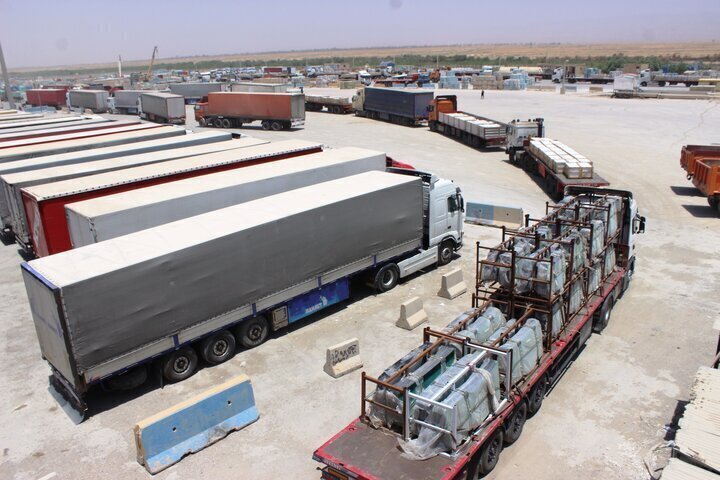Annual non-oil export from North Khorasan rises 41%

TEHRAN- The value of non-oil export from North Khorasan province, in the northeast of Iran, increased by 41 percent in the past Iranian calendar year 1403 (ended on March 20), according to a provincial official.
Mohammad Karamianfar, the acting head of Industry, Mining and Trade Department of the province, said that non-oil commodities worth $316 million were exported from the province in the previous year.
He said that most of the province's export goods last year included petrochemical products (urea, ammonia, melamine), steel products, cement, petroleum bitumen, agricultural products, polystyrene foam, and polystyrene tools.
He mentioned Iraq, Afghanistan, the United Arab Emirates, Uzbekistan, Azerbaijan, Libya, and Somalia, as some of the countries to which the products were exported.
The official further announced that 16 countries were added to the province's export target countries last year, including Madagascar, Bahrain, Kyrgyzstan, Qatar, Kuwait, Colombia, Djibouti, Kenya, the British Indian Ocean Territory, Indonesia, Malaysia, Tajikistan, Germany, Laos, Thailand and Bangladesh.
Karamianfar stated: “Also, during this period, seven export target countries were lost, including Jordan, South Africa, Italy, Tanzania, Taiwan, Serbia and Nigeria.”
He further announced that non-oil commodities valued at $40.4 million were imported to the province in the past year, falling 50 percent from the figure in the preceding year.
Most of the imported goods include rice and vanilla, which came from Pakistan and Mauritius, he added.
As previously announced by an official with the Islamic Republic of Iran Customs Administration (IRICA), Iran exported over 152 million tons of non-oil goods worth $57.8 billion in the past Iranian calendar year.
This marked a 10 percent increase in volume and a 15.62 percent rise in value compared to the previous year, Abolfazl Akbarpour, the IRICA deputy head for planning and international affairs, stated.
Imports totaled 39.3 million tons valued at $72.4 billion, representing a 0.77 percent decline in weight but an 8.22 percent increase in value from the previous year. The result was a non-oil trade deficit of $14.6 billion, largely due to the import of over $8.0 billion worth of raw gold bars, which accounted for 11.12 percent of the total import value.
Iran’s main non-oil exports included natural gas, liquefied propane and butane, methanol, liquefied petroleum gases and hydrocarbon gases, and gas condensates.
Natural gas was the top export item, with an average customs value of $314 per ton.
Other leading exports were petroleum bitumen, urea, non-alloy iron and steel billets, iron or steel bars, and polyethylene.
The top destinations for Iran’s exports were China at $14.8 billion, Iraq at $11.9 billion, the United Arab Emirates at $7.2 billion, Turkey at $6.8 billion, Pakistan and Afghanistan at $2.4 billion each, and India at $1.9 billion. These seven countries accounted for $47.6 billion, or 82.3 percent of Iran’s total non-oil export value.
On the import side, essential goods such as corn feed, soybean meal, genetically modified soybeans, rice, and sunflower seed oil were among the top items. Other key imports included smartphones, tractors, and auto parts.
The UAE was Iran’s largest source of imports at $21.9 billion, followed by China at $19.3 billion, Turkey at $12.4 billion, Germany at $2.4 billion, India at $1.7 billion, Hong Kong at approximately $1.4 billion, and Russia at $1.3 billion. Together, these countries supplied goods worth $60.7 billion, or 83.8 percent of Iran’s total imports.
Akbarpour said the trade deficit could be largely attributed to the surge in gold imports, which on their own exceeded $8.0 billion.
MA
Leave a Comment